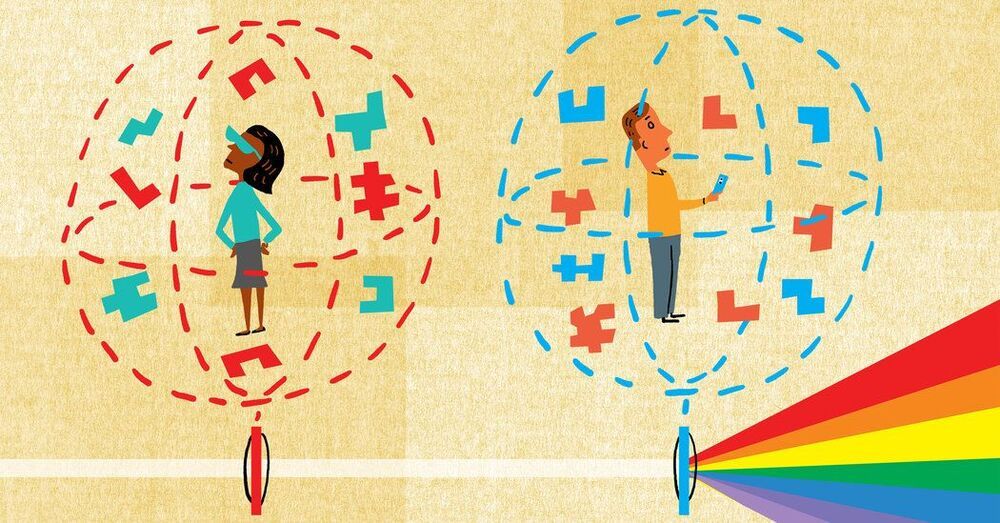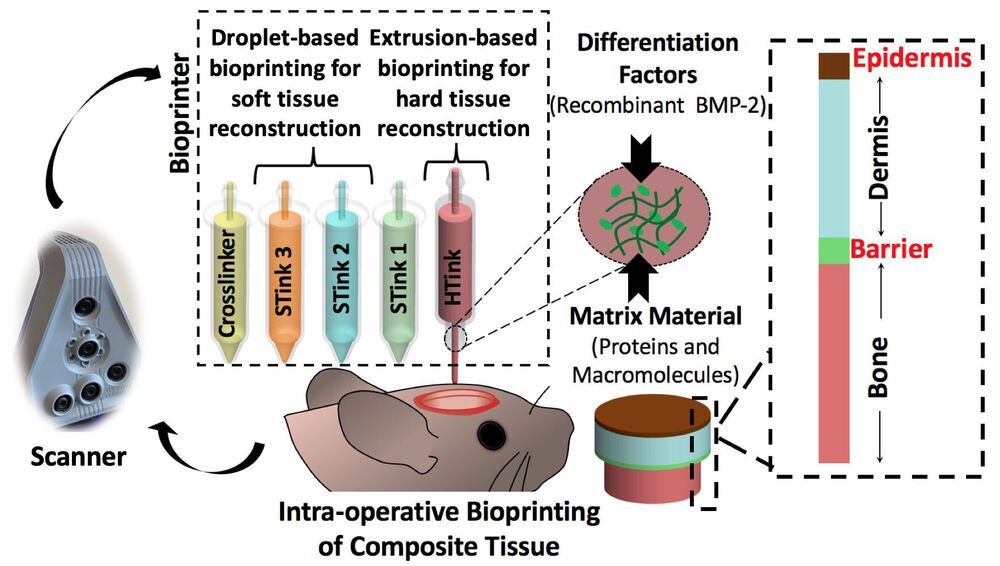Well done the SpaceX crew!
Tech boss ‘proud’ to be working with space agencies as astronauts begin six-month mission.
Well done the SpaceX crew!
Tech boss ‘proud’ to be working with space agencies as astronauts begin six-month mission.
In a major milestone for quantum physics, thousands of molecules have been induced to share the same quantum state, dancing together in unison like one huge super molecule.
This is a goal long-sought by physicists, who hope to harness complex quantum systems for technological applications — but getting a bunch of unruly molecules to work together is on a difficulty par with herding cats.
“People have been trying to do this for decades, so we’re very excited,” said physicist Cheng Chin from the University of Chicago.
Apollo 11 astronaut Michael Collins has died at the age of 90 after a battle with cancer, his family confirmed Wednesday morning.
Collins was part of the three-man crew that made history with the lunar landing in 1969, but unlike Neil Armstrong and Buzz Aldrin, he never walked on the moon.
Consciousness remains scientifically elusive because it constitutes layers upon layers of non-material emergence: Reverse-engineering our thinking should be done in terms of networks, modules, algorithms and second-order emergence — meta-algorithms, or groups of modules. Neuronal circuits correlate to “immaterial” cognitive modules, and these cognitive algorithms, when activated, produce meta-algorithmic conscious awareness and phenomenal experience, all in all at least two layers of emergence on top of “physical” neurons. Furthermore, consciousness represents certain transcendent aspects of projective ontology, according to the now widely accepted Holographic Principle.
#CyberneticTheoryofMind
There’s no shortage of workable theories of consciousness and its origins, each with their own merits and perspectives. We discuss the most relevant of them in the book in line with my own Cybernetic Theory of Mind that I’m currently developing. Interestingly, these leading theories, if metaphysically extended, in large part lend support to Cyberneticism and Digital Pantheism which may come into scientific vogue with the future cyberhumanity.
According to the Interface Theory of Perception developed by Donald Hoffman and the Biocentric theory of consciousness developed by Robert Lanza, any universe is essentially non-existent without a conscious observer. In both theories, conscious minds are required as primary building blocks for any universe arising from probabilistic domain into existence. But biological minds reveal to us just a snippet in the space of possible minds. Building on the tenets of Biocentrism, Cyberneticism goes further and includes all other possible conscious observers such as artificially intelligent self-aware entities. Perhaps, the extended theory could be dubbed as ‘Noocentrism’.
Existence boils down to experience. No matter what ontological level a conscious entity finds herself at, it will be smack in the middle, between her transcendental realm and lower levels of organization. This is why I prefer the terms ‘Experiential Realism’ and ‘Pantheism’ as opposed to ‘Panentheism’ as some suggested in regards to my philosophy.

This article is part of our new series, Currents, which examines how rapid advances in technology are transforming our lives.
Imagine operating a computer by moving your hands in the air as Tony Stark does in “Iron Man.” Or using a smartphone to magnify an object as does the device that Harrison Ford’s character uses in “Blade Runner.” Or a next-generation video meeting where augmented reality glasses make it possible to view 3D avatars. Or a generation of autonomous vehicles capable of driving safely in city traffic.
These advances and a host of others on the horizon could happen because of metamaterials, making it possible to control beams of light with the same ease that computer chips control electricity.

A red giant star may have a black hole companion that is only three solar masses in size.
In theory, a black hole is easy to make. Simply take a lump of matter, squeeze it into a sphere with a radius smaller than the Schwarzschild radius, and poof! You have a black hole. In practice, things aren’t so easy. When you squeeze matter, it pushes back, so it takes a star’s worth of weight to squeeze hard enough. Because of this, it’s generally thought that even the smallest black holes must be at least 5 solar masses in size. But a recent study shows the lower bound might be even smaller.
The work focuses red giant star known as V723 Monoceros. This star has a periodic wobble, meaning it’s locked in orbit with a companion object. The companion is too small and dark to see directly, so it must be either a neutron star or black hole. Upon closer inspection, it turns out the star is not just wobbling in orbit with its companion, it’s being gravitationally deformed by its companion, an effect known as tidal disruption.
Both the orbital wobble and the tidal disruption of V723 Mon can Doppler shift the light coming from it. Since both of these effects depend on the mass of the companion, you can calculate the companion mass. It turns out to be about 3 solar masses.

The now-familiar sight of traditional propeller wind turbines could be replaced in the future with wind farms containing more compact and efficient vertical turbines.
New research from Oxford Brookes University has found that the vertical turbine design is far more efficient than traditional turbines in large-scale wind farms, and when set in pairs the vertical turbines increase each other’s performance by up to 15%.
A research team from the School of Engineering, Computing and Mathematics (ECM) at Oxford Brookes led by Professor Iakovos Tzanakis conducted an in-depth study using more than 11500 hours of computer simulation to show that wind farms can perform more efficiently by substituting the traditional propeller-type Horizontal Axis Wind Turbines (HAWTs), for compact Vertical Axis Wind Turbines (VAWTs).

Fixing traumatic injuries to the skin and bones of the face and skull is difficult because of the many layers of different types of tissues involved, but now, researchers have repaired such defects in a rat model using bioprinting during surgery, and their work may lead to faster and better methods of healing skin and bones.
“This work is clinically significant,” said Ibrahim T. Ozbolat, Hartz Family Career Development Associate Professor of Engineering Science and Mechanics, Biomedical Engineering and Neurosurgery, Penn State. “Dealing with composite defects, fixing hard and soft tissues at once, is difficult. And for the craniofacial area, the results have to be esthetically pleasing.”
Currently, fixing a hole in the skull involving both bone and soft tissue requires using bone from another part of the patient’s body or a cadaver. The bone must be covered by soft tissue with blood flow, also harvested from somewhere else, or the bone will die. Then surgeons need to repair the soft tissue and skin.
Interfaith solutions for major global challenges — bawa jain — founder, the centre for responsible leadership.
Bawa Jain is a visionary leader in the interfaith movement throughout the world.
Mr. Jain is Founder and President of The Centre for Responsible Leadership (https://www.thecrl.org/), a non-profit organization dedicated to assembling global thought leaders to find concrete solutions to the major challenges plaguing our world today.
Mr. Jain is also the Chairman of the World Youth Peace Summit, which brings together dynamic young leaders who share the dream of peace, organizing Youth Peace Conferences and facilitating a worldwide network that links active young people, and the Secretary General of the World Council of Religious Leaders, an independent body, working to bring religious resources to support the work of the United Nations in a common quest for peace.
Mr. Jain Co-Founded the Religious Initiative of The World Economic Forum, Founded The Gandhi King Awards for Non-Violence, and launched World Council of Religious Leader’s Religion One on One Initiative and is a strong proponent of Religious Diplomacy.